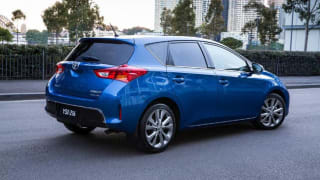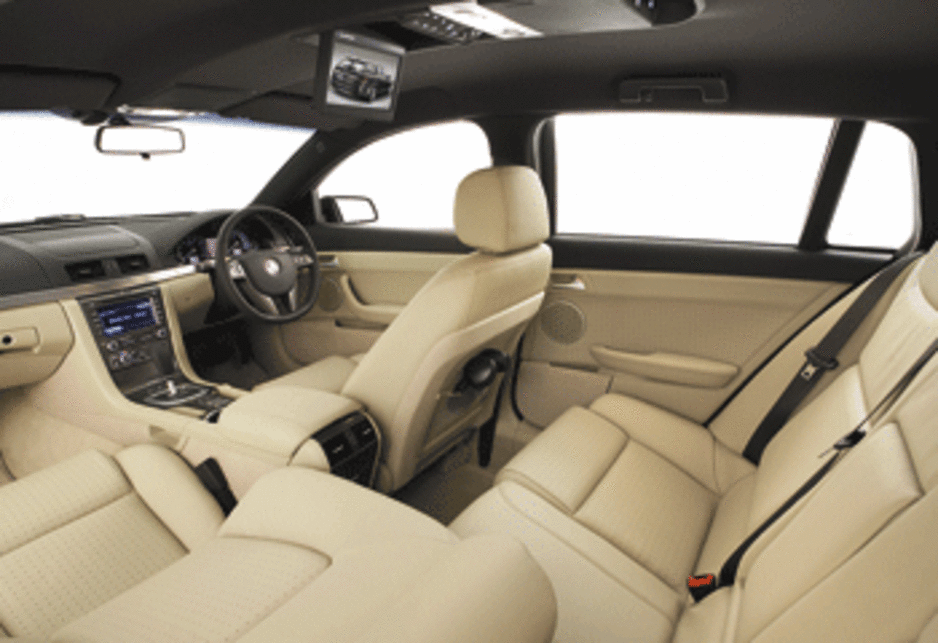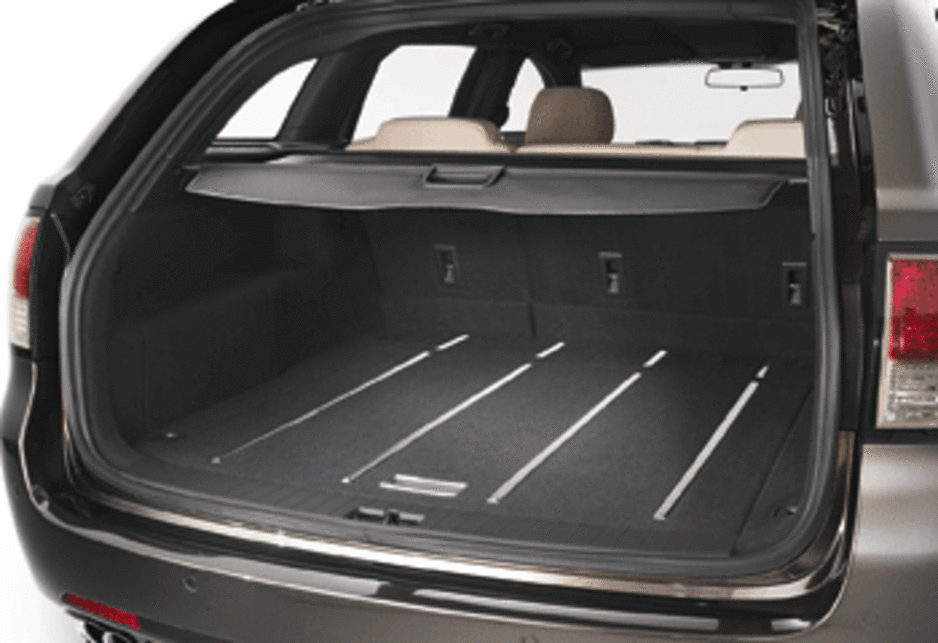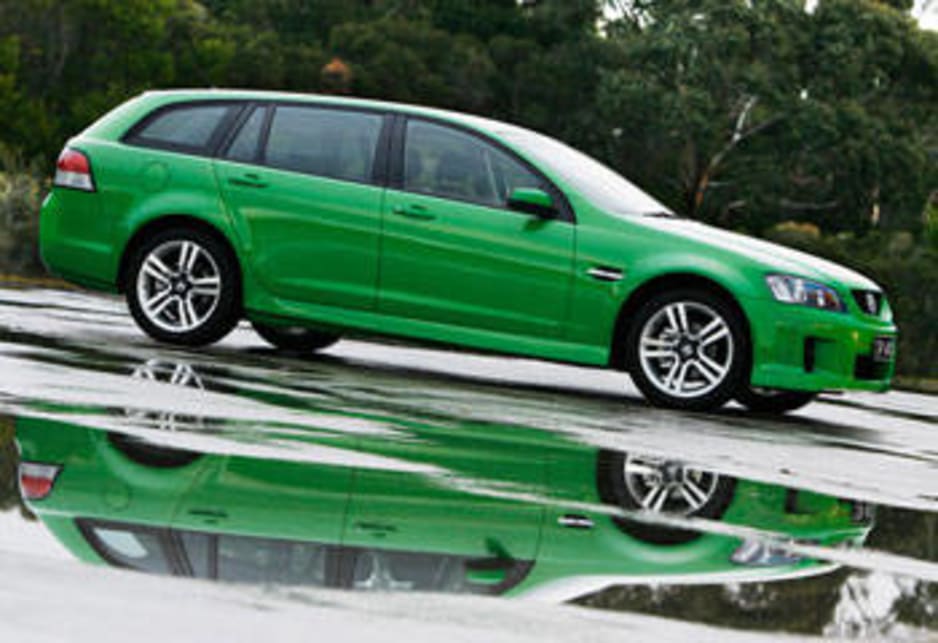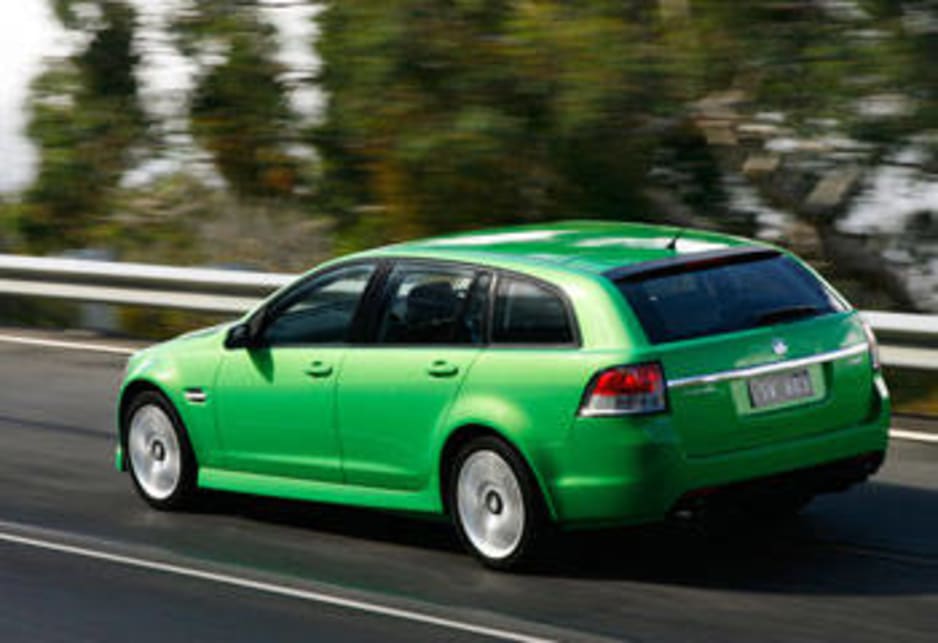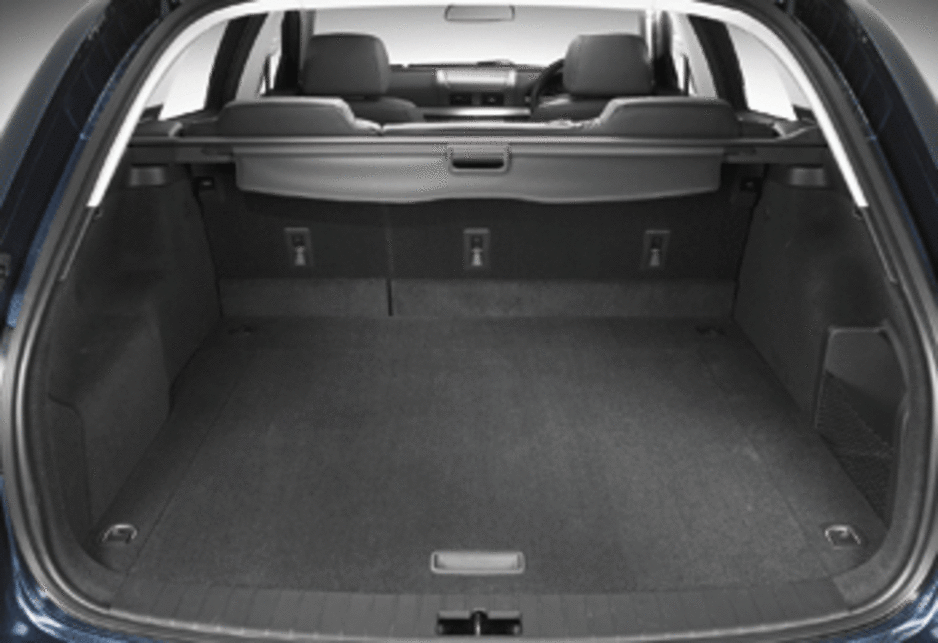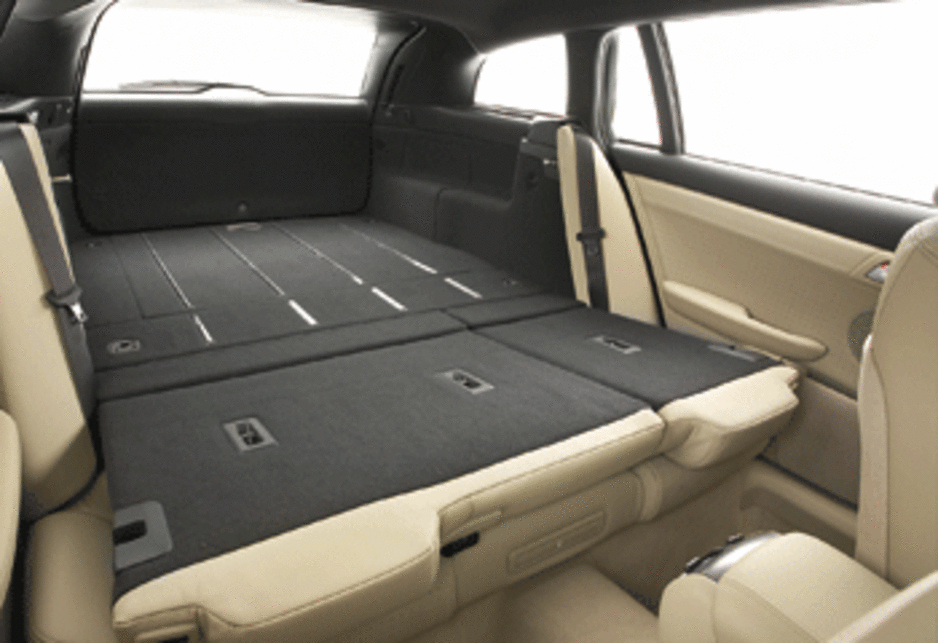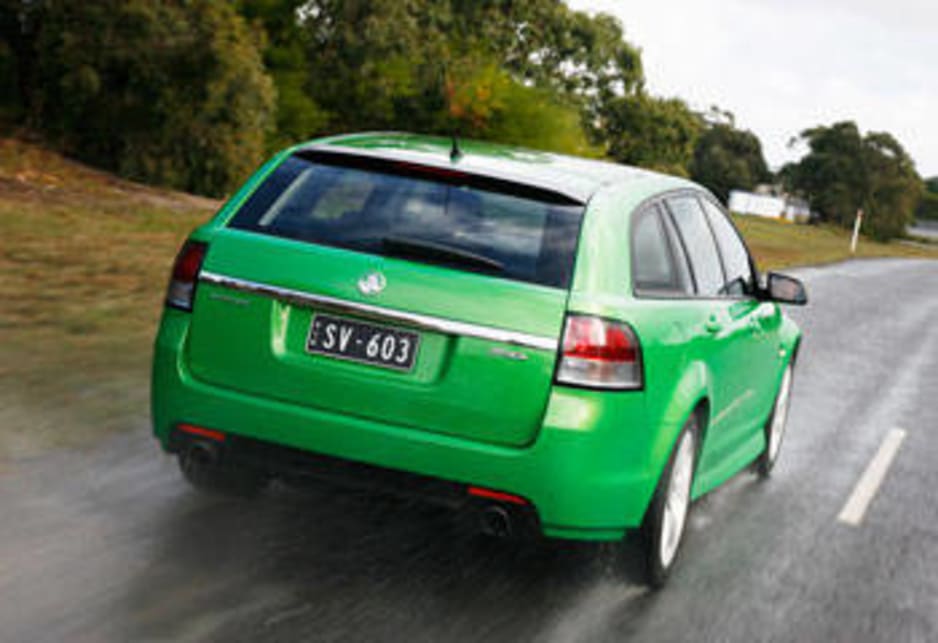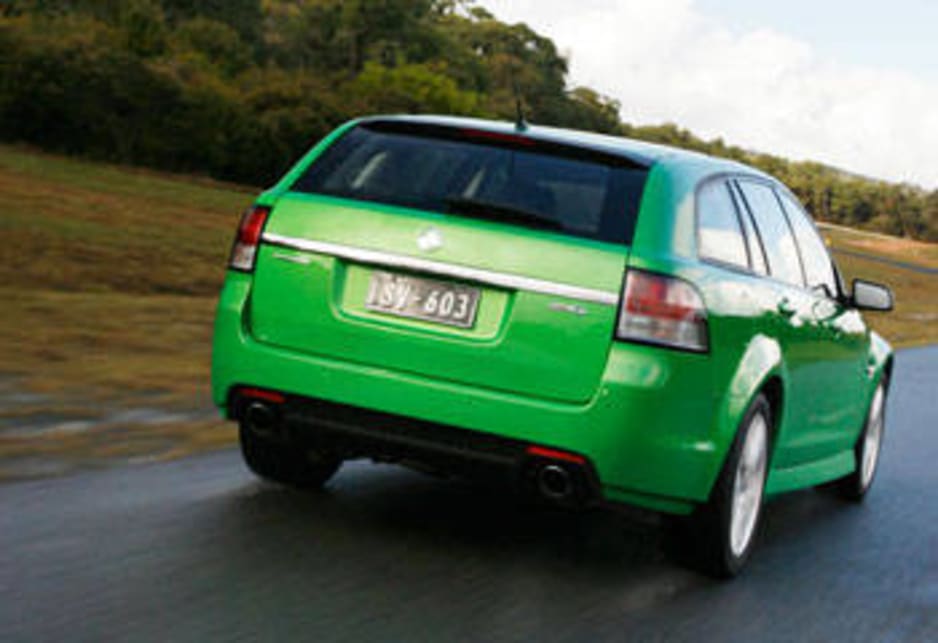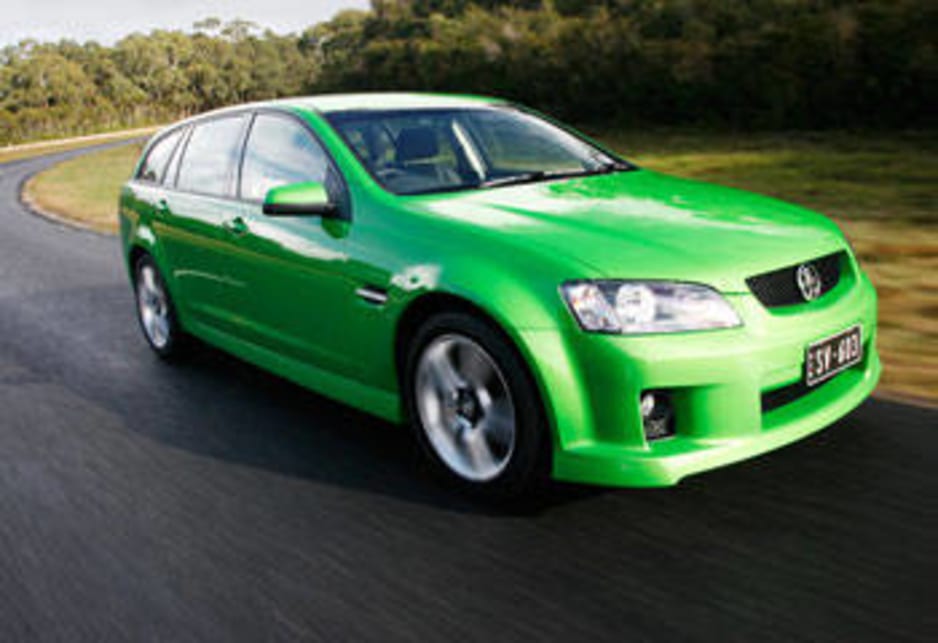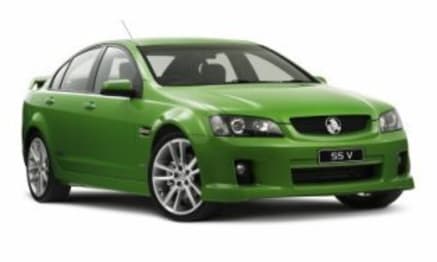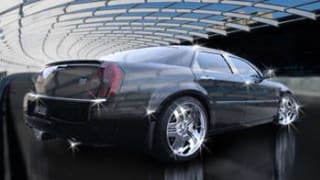Correction, make that Sportwagon, because that's what they're calling the new VE wagon.
It's not as long as the previous VZ, with a smaller load area, designed primarily with looks in mind and cast in the same mould as the sleek Euro wagons.
With a raked roof line, shorter rear overhang and a tailgate that is cut back into the roof area, the Sportwagon is a handsome looking car from all angles.
The look is poised, broad and muscular, presenting a strong set of haunches to those behind, especially the powerful SS model.
The SS badge itself hasn't been seen on the back of a wagon since the limited edition VY in 2003.
But with the same V6 and V8 engines that power the current sedan, the new wagon offers nothing new in terms of fuel economy for battling families, at a time when petrol is threatening to hit $2.00 a litre.
There's not even a dual fuel version of the wagon, offering an economical LPG option and in fact there probably won't be for some time to come.
Chief designer Richard Ferlazzo explained the difficulty with LPG is finding a suitable place to locate the gas cylinder.
He said a donut-shaped tank could have replaced the spare wheel in the wagon, but this in turn would have meant sticking a spare or space saver in the load area.
“We put the tyre inside and tried it but it just didn't look right, it didn't look like a truly professional execution for a brand new car,” Ferlazzo said.
The designer, noted for the gorgeous Efijy show car, explained planning for the wagon had started several years ago when the cost of fuel was not such an issue.
He said changing design mid-stream was difficult, but added that engineers were currently looking at how the gas cylinder could be accommodated.
He said the result would probably be a “mono fuel” or LPG only model, but that it might not be introduced until well into the wagon's life cycle _ possibly not until the mid-life upgrade.
A dedicated LPG model would allow engineers to optimise the engine delivering better economy.
“When we started doing the car it wasn't a big deal, but fleets enjoy it and we still want that fleet market,” he said.
As it stands the entry level 3.6-litre V6 auto consumes a minimum 11.1 litres/100km, a little more than the sedan's 10.8.
While the V8 SS in manual form uses as much as 14.4 litres/100km.
In comparison, a dual fuel Commodore sedan consumes 15.5 litres of LPG for every 100km travelled _ significantly more but of course LPG is less than half the cost.
It has been almost two years since the launch of the new VE Commodore.
With the addition of the Korean-built Captiva off roader to the range, it was speculated the wagon might have outlived its stay.
But its absence has left a sizeable hole in Holden's sales figures, particularly in the area of fleet sales.
With its sporty new persona, Holden is looking forward to regaining this lost ground.
In a break with tradition, the new Sportwagon sits on the same chassis as the sedan, unlike the previous VZ wagon that was based on the long wheelbase Statesman.
Having said this, the VE has a longer wheelbase to start with, so the difference between the two is just 24mm.
At 4897mm, the Sportwagon is 136mm shorter than VZ wagon, with a load capacity of 2000 litres versus the VZ's 2752 litres (895 versus 1402 with seats up).
The main point of difference is the load area itself which is 1113mm long with the seats up or almost 22cm shorter.
Because the hinge point of the tailgate has been cut back into the roof, the back can be easily opened in confined areas, requiring only about 25cm of space behind the car.
The load height has been raised 36mm, to make loading and unloading easier.
Compared to the sedan, the wagon is 91kg heavier with rear legroom the same in both (but 15mm less than VZ).
To accommodate the extra weight Holden has retuned the sedan's suspension for the wagon, with revised spring rates and a smaller diameter rear stabiliser.
The average driver will find little difference in the way the two ride and handle.
Fitted with the standard 180kW V6, Omega and Berlina are still forced to make do with a four-speed auto.
The high output 195kW V6 steps up to a five-speed auto while the V8 is teamed with either a six-speed manual or auto.
Both five and six-speed autos add manual change mode via the gear shift.
Our favourite is the Calais V fitted with the V8 and auto transmission.
It’s not as ostentatious as the SS but still manages to tick all the right boxes.
The instrumentation, particularly the speedo, is much cleaner and less cluttered and the overall effect is more refined.
Standard equipment across the seven model range includes six airbags, electronic stability control, rear parking sensors, alloy wheels and air conditioning.
Prices for Sportwagon start at $37,790, just $1000 more than the sedan, with a rigid cargo barrier adding $468.
Related story
First drive: Holden VE Sportswagon
2008 Holden Commodore Sportwagon
